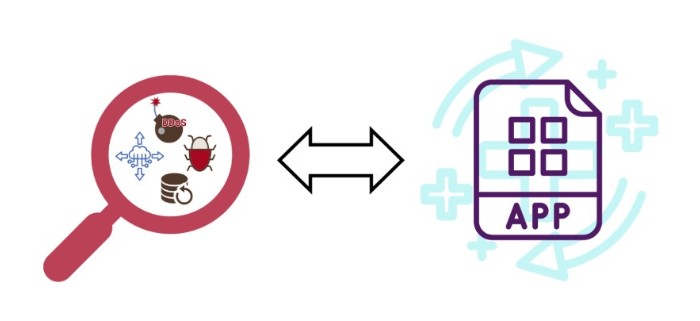Resilience Testing
The involvement of software applications in day-to-day operations has reached an unprecedented level in this digital era. A large number of businesses and government operations would shut down if any of their software systems went down.
As a result, the industry has evolved from 24/7 support to self-healing software to maintain uninterrupted operations. This advancement has helped organizations reduce costs associated with downtime and increase end-user satisfaction. This characteristic of a software system is known as software resilience.
What is Resilience Testing?
Resilience testing measures an application’s capability to continue providing the same level of service whenever it encounters failures and disruptions to normal flow. It involves these key objectives:
- Identify weak points: Determine parts of the system that may be more prone to failure.
- Recovery mechanism: Evaluate various failure types and the system’s recoverability.
- Business continuity: Ensure that critical business processes remain operational even during disruptions.
- Better user experience: Reduce the downtime, keeping service quality up for the customers.
Importance of Resilience Testing
As organizations increasingly adopt cloud computing and microservices-based architectures, their systems become more complex, raising the potential for unexpected failures. This growing complexity makes resilience testing in software engineering crucial for several reasons, including:
- Increased reliability: Systems that have undergone resilience testing are more reliable and have less chance of downtime.
- Cost efficiency: This can be obtained by identifying and mitigating vulnerabilities on time, thus avoiding the costs associated with an outage or data loss.
- Compliance: Most industries have regulations that require systems to show resilience, making this testing necessary for compliance.
- Customer trust: A resilient system builds customer trust; customers expect the service to be available.
Methodologies for Resilience Testing
There are a variety of methodologies to perform resilience testing in software engineering. Each has its own focus and techniques. Below are some of the industry’s common approaches.
1. Chaos Engineering
Chaos engineering is about creating artificial failures in a system to see how it behaves under stress. This proactive approach helps teams recognize weaknesses, allowing them to fortify the system against direct attacks. Key practices include:
- Simulating failures: Introduce faults such as server crashes, network latency, or resource exhaustion.
- Monitoring responses: Use monitoring tools to observe the behavior and performance of a system during such failures.
- Iterative improvement: Analyze results and make necessary adjustments to enhance resilience.
2. Load Testing
Load testing determines a system’s performance under expected and peak load conditions. It identifies bottlenecks through high traffic or resource utilization to ensure the system will operate under increased stress without complete failure. Key activities of this process include the following:
- Define load scenarios: Create realistic scenarios that emulate usage and traffic generation patterns.
- Performance metrics: Analyze response time, throughput, and resource utilization monitoring.
- Identifying limitations: Establish the maximum load the system can take before performance deterioration.
3. Failover Testing
Failover testing verifies the switchover to a backup system or component when the primary component fails. This is especially critical for high-availability systems. Key steps include:
- Setting up redundancies: Make sure that backup systems are correctly configured.
- Test failovers: Manually remove principal elements to validate the failover/shutdown process.
- Verify recovery: The system should switch to the backup with no data loss or minimal downtime.
4. Recovery Testing
This testing aims to ensure the system’s ability to recover from failures. Recovery testing can include a review of backup and restore processes. Some essential practices that are used include:
- Backup procedure testing: To ensure quick and accurate data recovery, you should attempt to test regular backup systems.
- Measure recovery time: Measure how long it takes to restore services after a failure.
- Document recovery plans: Document the recovery process to ensure quick action during incidents.
Tools Available for Resilience Testing
- Chaos Monkey: Generates random termination of production instances to simulate scenarios for app resilience.
- Apache JMeter: A load-testing tool to simulate heavy traffic and test performance.
- Ansible and Terraform: Automate recovery of server infrastructure that allows quick deployment backups.
- Prometheus and Grafana: Real-time system health and performance monitoring.
Best Practices
The following are some best practices to consider when implementing resilience testing.
1. Integrate into the Development Lifecycle
Resilience testing should be an integral part of the software development lifecycle. Performing resilience testing early in the SDLC will enable teams to find potential issues before they become more significant problems.
2. Automate Testing Processes
Automation can improve the effectiveness of resilience testing. Engineers should routinely execute testing to ensure systems remain resilient as they change. Tools like Jenkins, Selenium, Chaos Monkey, and Gen AI can support automated resilience testing.
3. Create a Resilience Culture
Build an organizational culture that focuses on resilience. Culture would include training teams in the principles of resilience, enabling DevOps collaboration between development and operations, and focusing on project planning with a keen emphasis on application resiliency.
Conclusion
Resilience is very important for businesses. Regular resilience testing will help keep software highly available while reducing costs and earning high customer satisfaction. Following best practices and mastering different resilience testing tools will help organizations prepare for the unexpected and make their systems more resilient against modern cyberattacks.
Overall, resilience testing has become integral to the software development lifecycle, ensuring that systems remain stable and reliable under unexpected conditions.


